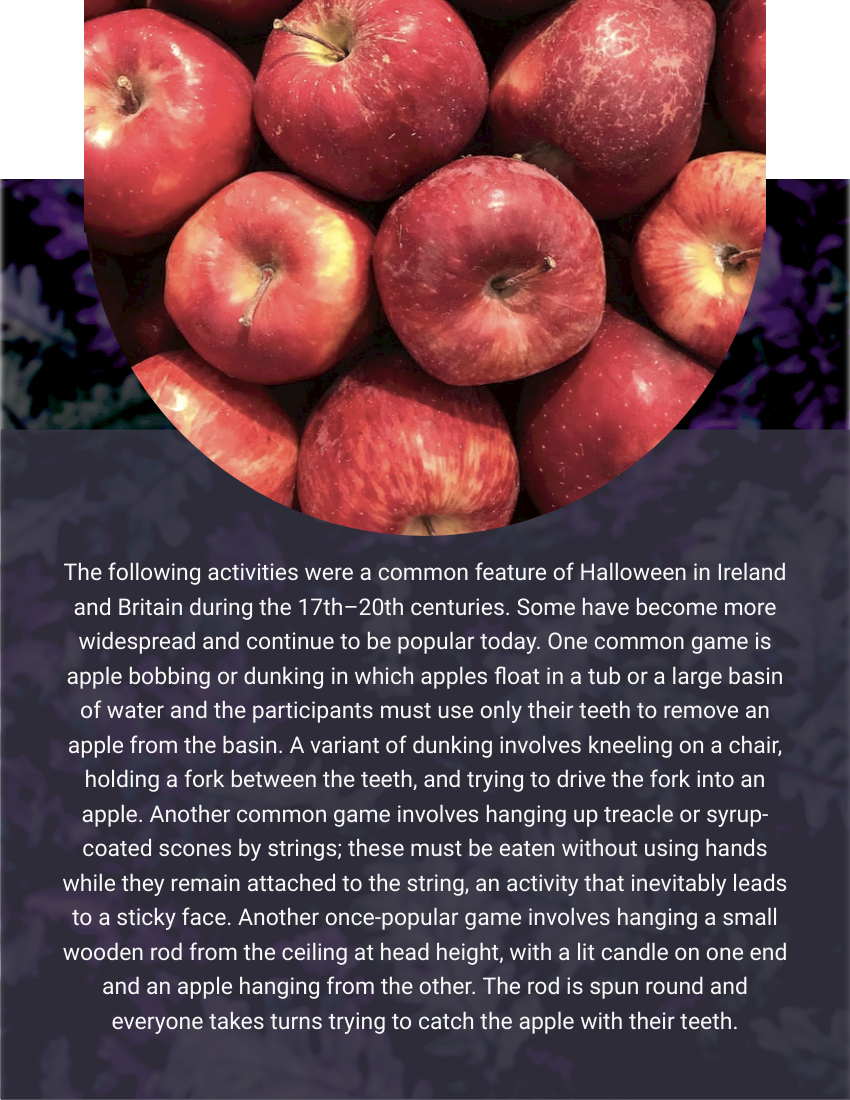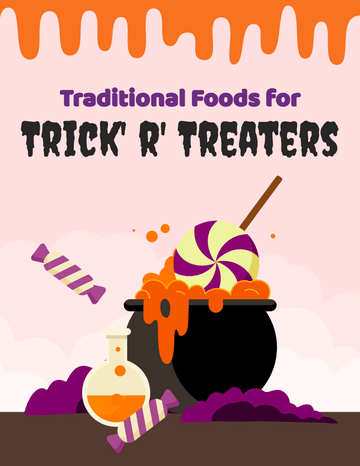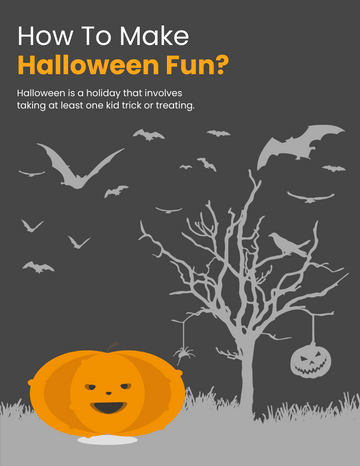Halloween Games and Activities
Halloween Games and Activities
Telling ghost stories, listening to Halloween-themed songs, and watching horror films are common fixtures of Halloween parties. Episodes of television series and Halloween-themed specials (with the specials usually aimed at children) are commonly aired on or before Halloween.
There are several games traditionally associated with Halloween. Some of these games originated as divination rituals or ways of foretelling one's future, especially regarding death, marriage, and children.
During the Middle Ages, these rituals were done by a "rare few" in rural communities as they were considered to be "deadly serious" practices. In recent centuries, these divination games have been "a common feature of the household festivities" in Ireland and Britain. They often involve apples and hazelnuts. In Celtic mythology, apples were strongly associated with the Otherworld and immortality, while hazelnuts were associated with divine wisdom. Some also suggest that they derive from Roman practices in celebration of Pomona.
The following activities were a common feature of Halloween in Ireland and Britain during the 17th–20th centuries. Some have become more widespread and continue to be popular today. One common game is apple bobbing or dunking in which apples float in a tub or a large basin of water and the participants must use only their teeth to remove an apple from the basin. A variant of dunking involves kneeling on a chair, holding a fork between the teeth, and trying to drive the fork into an apple. Another common game involves hanging up treacle or syrup-coated scones by strings; these must be eaten without using hands while they remain attached to the string, an activity that inevitably leads to a sticky face. Another once-popular game involves hanging a small wooden rod from the ceiling at head height, with a lit candle on one end and an apple hanging from the other. The rod is spun round and everyone takes turns trying to catch the apple with their teeth.
Several of the traditional activities in Ireland and Britain involve foretelling one's future partner or spouse. An apple would be peeled in one long strip, then the peel tossed over the shoulder. The peel is believed to land in the shape of the first letter of the future spouse's name. Two hazelnuts would be roasted near a fire; one named for the person roasting them and the other for the person they desire. If the nuts jump away from the heat, it is a bad sign, but if the nuts roast quietly it foretells a good match. A salty oatmeal bannock would be baked; the person would eat it in three bites and then go to bed in silence without anything to drink. This is said to result in a dream in which their future spouse offers them a drink to quench their thirst. Unmarried women were told that if they sat in a darkened room and gazed into a mirror on Halloween night, the face of their future husband would appear in the mirror. The custom was widespread enough to be commemorated on greeting cards from the late 19th century and early 20th century.
Another popular Irish game was known as púicíní ("blindfolds"); a person would be blindfolded and then would choose between several saucers. The item in the saucer would provide a hint as to their future: a ring would mean that they would marry soon; clay, that they would die soon, perhaps within the year; water, that they would emigrate; rosary beads, that they would take Holy Orders (become a nun, priest, monk, etc.); a coin, that they would become rich; a bean, that they would be poor. The game features prominently in the James Joyce short story "Clay" (1914).
In Ireland and Scotland, items would be hidden in food – usually, a cake, barmbrack, cranachan, champ, or colcannon – and portions of it served out at random. A person's future would be foretold by the item they happened to find; for example, a ring meant marriage and a coin meant wealth.
Up until the 19th century, the Halloween bonfires were also used for divination in parts of Scotland, Wales, and Brittany. When the fire died down, a ring of stones would be laid in the ashes, one for each person. In the morning, if any stone was mislaid it was said that the person it represented would not live out the year.























































